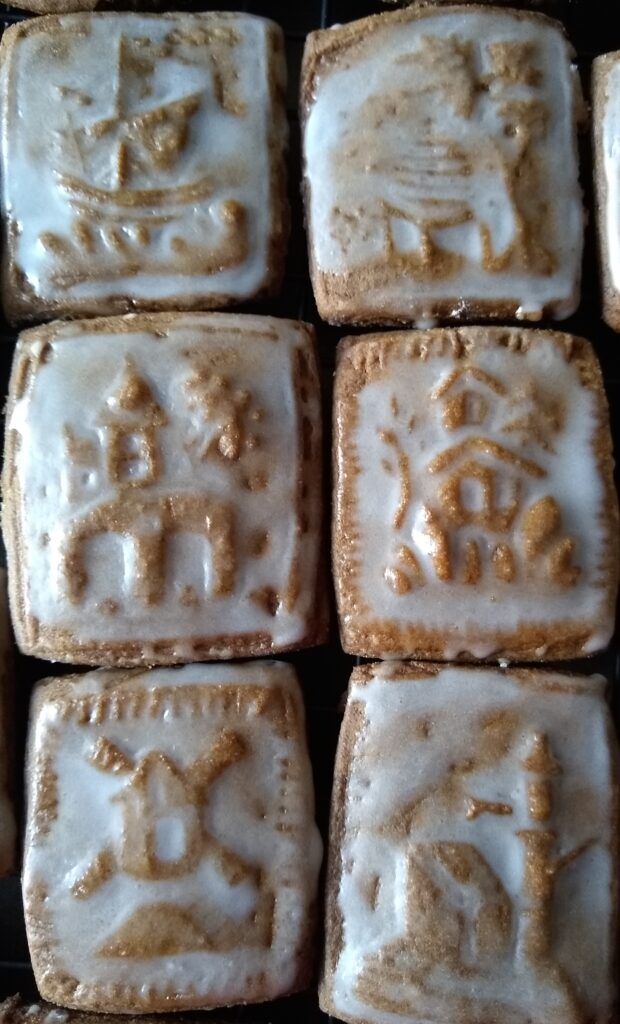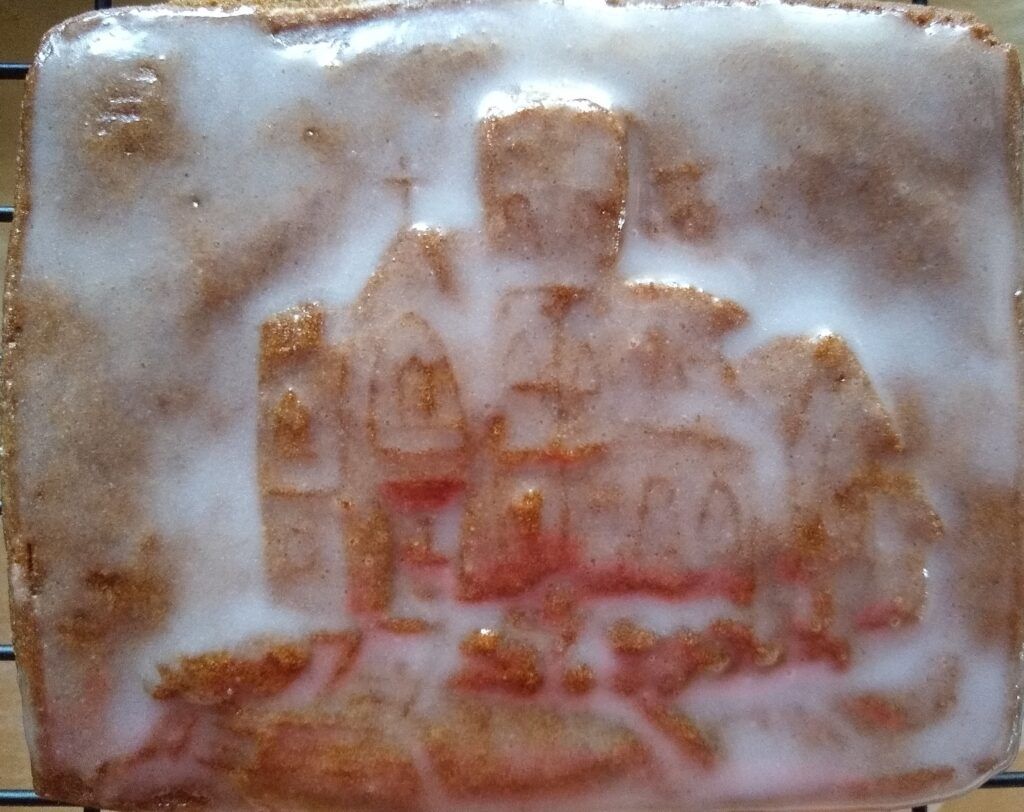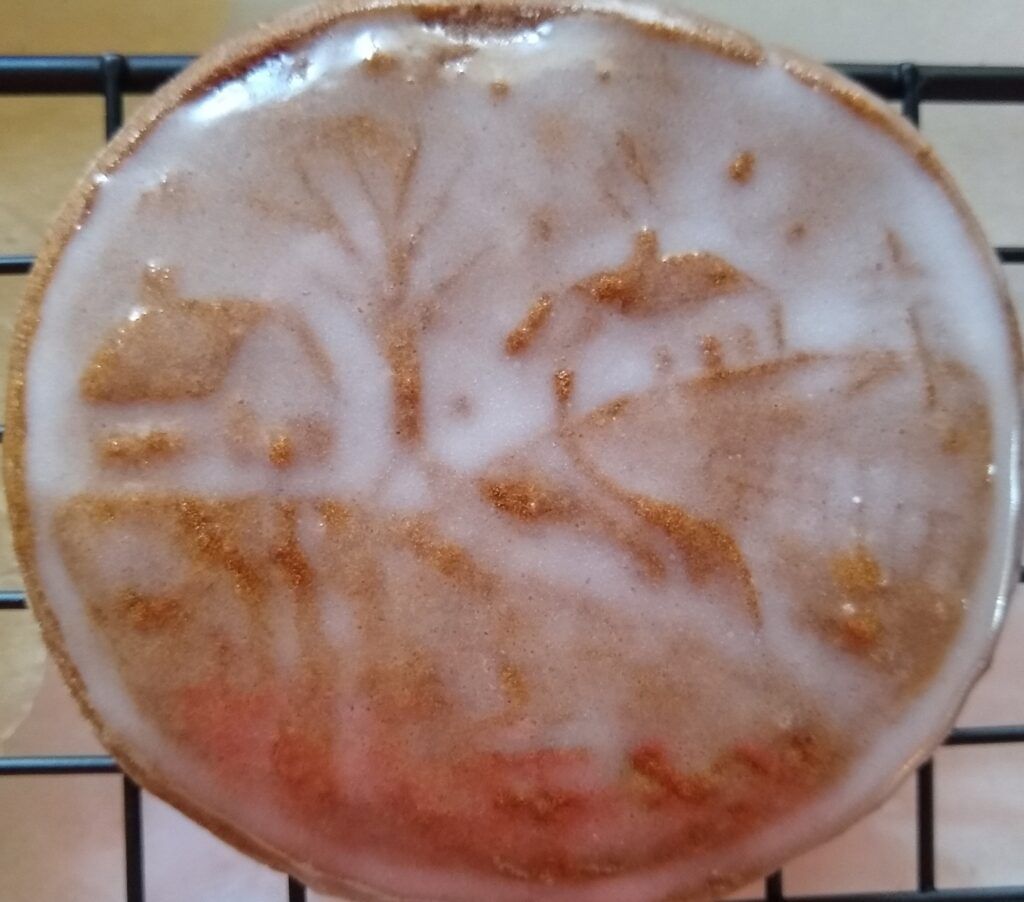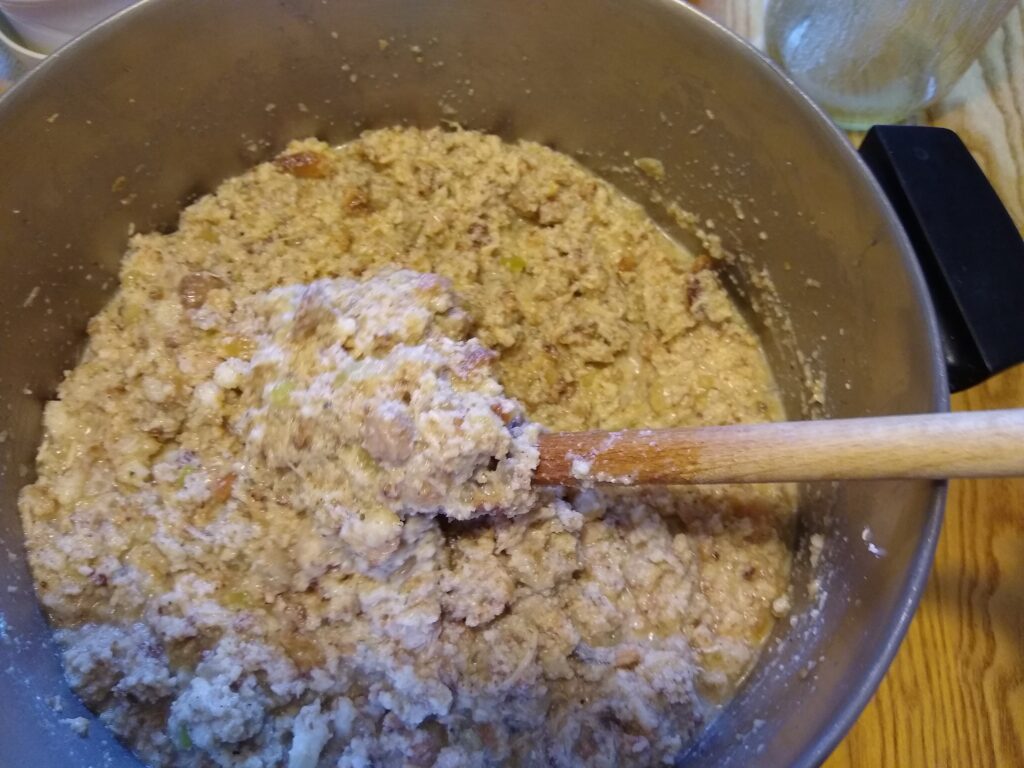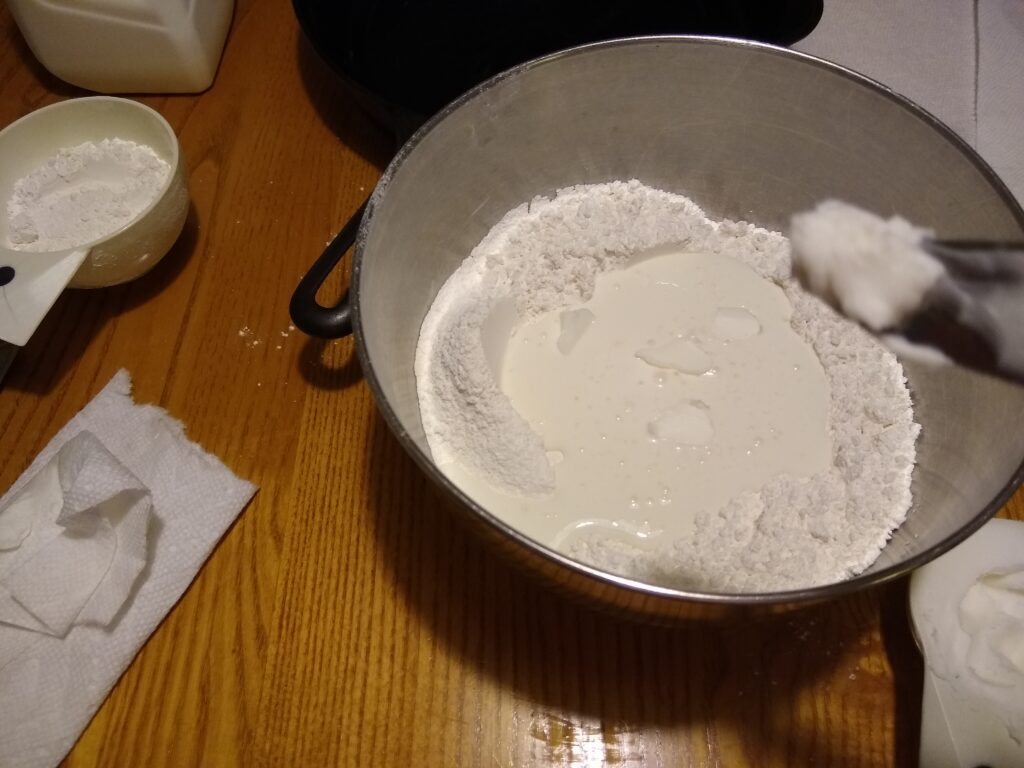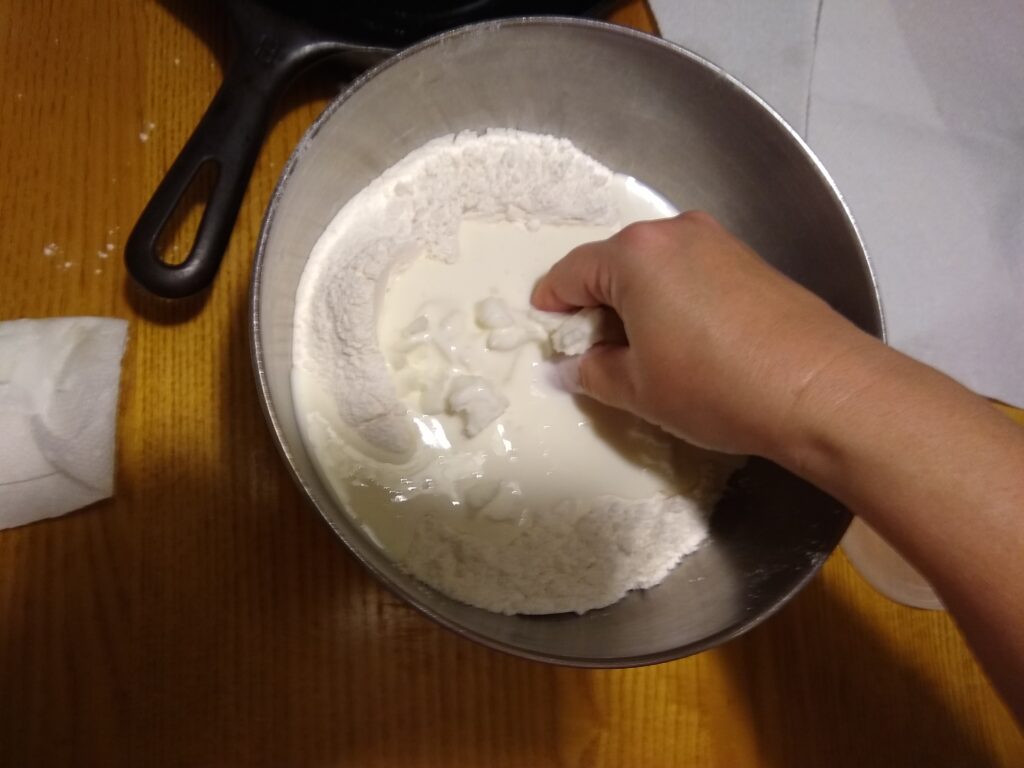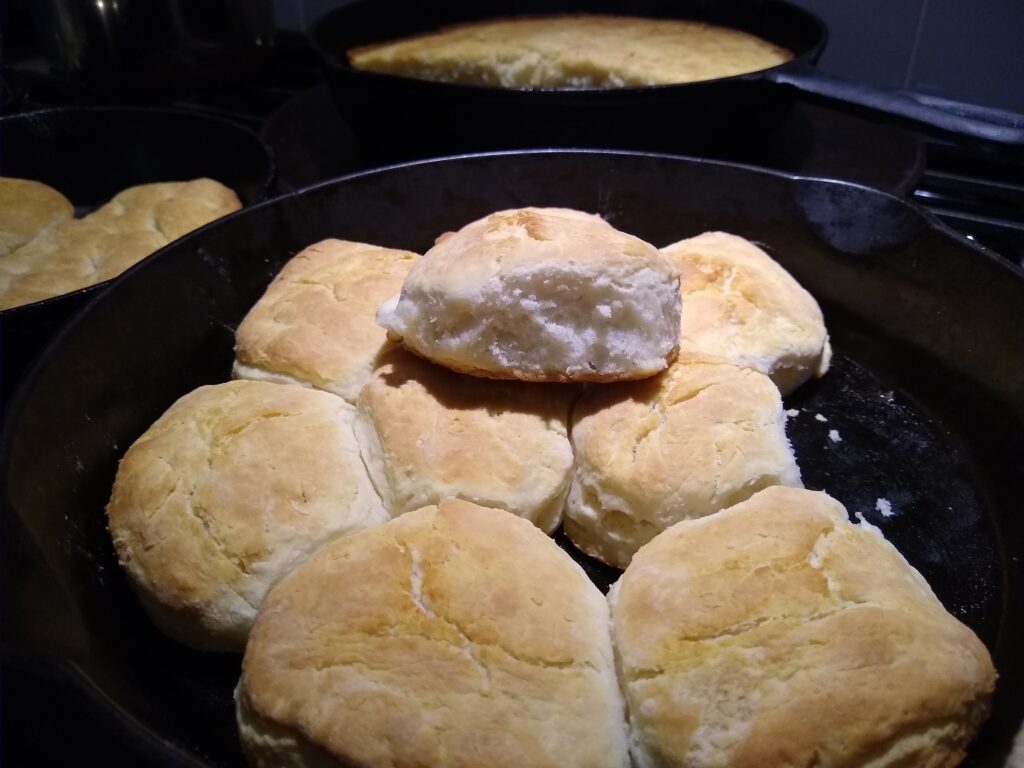Recently, I made up a yearly batch of mushroom soup. I know that sounds a bit strange, but I am not a big fan of canned mushroom soup. I love mushrooms, but don’t think that is really what you get in those cans. A good mushroom soup is full of mushroom bits, and can be used for just about anything, from a regular soup on a cold day to the sauce for beef or chicken cooked in a crockpot. When I make mushroom soup, I buy about 4 pounds of various mushrooms (you can often find mushrooms for $1 or $2 off a pack in the grocery, when they need to be sold quickly; I lucked out this time and was able to buy all of the ones I used like this). Wash and chop them up, dice up about 2+ cups of onions, 2-3 cloves of garlic, use homemade veggie broth to thin, blitz them with a stick blender, and you are good to go! I make this big batch, then freeze it in pint bags for use over the next year. I made about 12 pints in February (here is the gallery link for pictures.) If you are wondering about the homemade veggie broth, I make that too, because I think all canned and boxed broth tastes metallic (yes, I am picky about my food, my mom grows a lot of vegetables, and I love to cook, it works out). I use a vegetable broth concentrate recipe I found on the Test Kitchen website that works great, no cooking required. You just use a food processor to finely puree the raw veggies, put it in wide mouthed jars, and freeze. Use only as much as you need with boiling water. (Link here.)
All of this is to say that while I was making this soup I remembered researching 18th century cooking when I worked at the museum, and reading the recipe for Portable Soup. Generally, most people today think that convenient mixtures for quick cooking are completely modern, but there were a lot of tricks to make cooking faster, especially when you didn’t have the convenience of a freezer (I love a big chest freezer!). Canning that uses the type of lids that home canners use today didn’t start until the technique for Vulcanizing rubber was invented around the mid 19th century. Canning in a tin can was invented a bit earlier, in the last decade of the 18th century. Actually, if you ever want to look into that history, it dates back to a competition created by Napoleon Bonaparte, who wanted to have an easier way to feed his army on the move, but didn’t want to pay the research costs for development (sound familiar?). So he challenged anyone who wanted to try for a prize of 12,000 Francs to create a better way to preserve food. While glass containers with corks were used at first, tin cans were used after the 1810s, probably because they were less breakable for their chief market, the military (though you had to use a chisel and mallet to open the cans). However, before this, and indeed after due to the expense of early 19th century canned foods, most people used a variety of methods to preserve foods at home. For travel, dried was best, and if you wanted a good flavored soup that was easy to fix during travel, portable soup was one of your best choices.
Portable soup is the 18th century version of bullion, and could be called soup glue. Hungry yet? Actually, the process is time consuming, but not all that different than what has to be done today to get the same result. Basically, you cook down the meat and various flavorings until all the collagen in the meat has turned to gelatin, strain the liquid, then continue cooking to evaporate as much water as possible and dry the resulting ‘glue’. Break up the dried gelatin into smaller pieces and store in a cool, dry tin with paper in between layers, and this portable soup could be used as the quick base for any soup. Travelers, soldiers, anyone who carried the dried bullion could boil water and add whatever else they had available. Soldiers could use broken up hardtack to cook like dumplings in the broth, or rice, dried roasted corn, or beans could be cooked in the soup base. If there was dried meat available, it could be rehydrated and added to the soup as well. Much more tasty than just using water, and pre-salted too! Portable soup didn’t have to be for travel, it could also be a time saver in the home kitchen, and could be very useful during summer, when it would be much better to limit the amount of time you had to cook over a fire. In case you are curious about a recipe, I am going to include one from 1841, and some of the instructions from an English cookbook from 1796. The 1796 cookbook, written by Hannah Glasse, was one of the most popular English language cookbooks sold during the 18th century. That recipe is very long, and much more detailed than the one from the American cookbook.
Portable Soup–Take beef or veal soup, and let it get perfectly cold, then skim off every particle of the grease. Set it on the fire, and let it boil till of a thick glutinous consistence. Care should be taken that it does not burn. Season it highly with salt, pepper, cloves and mace – add a little wine or brandy, and then turn it on to earthen platters. It should not be more than a quarter of an inch in thickness. Let it remain until cold, then cut it into pieces three inches square, set them in the sun to dry, turning them frequently. When perfectly dry, put them in an earthen or tin vessel, having a layer of white paper between each layer. These, if the directions are strictly attended to, will keep good a long time. Whenever you wish to make a soup of them, nothing more is necessary, than to put a quart of water to one of the cakes, and heat it very hot. The American Housewife, by an Experienced Lady, 1841.
To Make Portable Soup–Take two legs of beef, of about fifty pounds weight, take off all the skin and fat as well as you can, then take all the meat and sinews clean from the bones, which meat put into a large pot, and put to it eight or nine gallons of soft water; first make it boil, then put in twelve anchovies, an ounce of mace, a quarter of an ounce of cloves an ounce of whole pepper black and white together, six large onions peeled and cut in two, a little bundle of thyme, sweet marjoram, and winter savory, the dry hard crust of a two-penny loaf, stir all together and cover it close, lay a weight on the cover to keep it close down, and let it boil softly for eight or nine hours, then uncover it and stir it together; cover it close again and let it boil till it is a very rich good jelly . . . [and then strain it and let cool, skim off the fat and settlings, simmer it again for several hours, let cool, spread out thin to dry for 8 or 9 hours, and you’re done; not exactly a fast process!] The Art of Cooking Made Plain & Easy, 1796.


